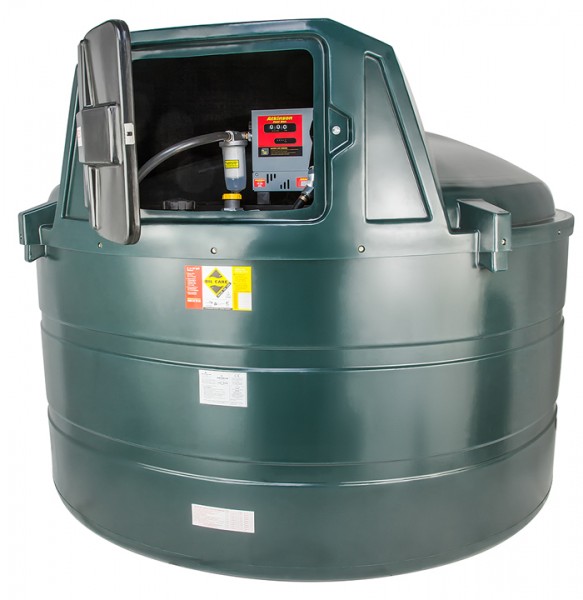
Putting fuel in your heating oil tank is essential if you want to keep your radiators working and your boiler switched on. But rather than relying on your intuition, most heating oil tanks come with fuel gauges to help you see how much is left inside.
Not all fuel tank gauges are created equally, and some are easier to use than others while some provide you with precise measurements and others are less clear. If you are struggling to get the measure of your heating oil fuel tank gauge, then let us help you through the process.
What is the best way to read your oil tank fuel gauge?
The task of reading your oil tank fuel gauge can be a simple one but depending on the type of gauge you have, the way you read the fuel level varies.
- The first thing to do is to locate the fuel gauge on your oil tank. Somewhere on the exterior of your tank should be a gauge, unless you have a digital gauge, which will be inside your home. The most common places to find the gauge are at the top, side or bottom of your tank.
- Once found, reading the gauge depends on the type. A mechanical gauge will commonly look like an old-fashioned set of scales, ranging from empty to full, while a digital gauge will have an electronic display that may provide you with a capacity percentage or how many litres are left.
- Each gauge type will be calibrated slightly differently so it’s important to consult the handbook to determine exactly how yours works.
- Check your heating oil tank fuel gauge regularly to ensure that you do not run out of fuel but also to monitor how much you are using. Understanding how much fuel you use is important for budgeting and you may find that you use less or more depending on the time of year.
Types of oil tank fuel gauge
There are three main types of oil tank fuel gauges to consider: sight gauge, tank float gauge and electronic gauge.
Sight gauge
A sight gauge is the most basic form of tank gauge and is the cheapest to install. It works thanks to a clear tube that runs to the bottom of your tank from the top, and all you need to do is open your viewing portal up and take a look inside to see where your fuel level lies.
Tank float gauge
Many gauges use a simple floating system, where a float is used to measure the level of fuel inside the tank. Float gauges use a hinged arm that sits on the surface of the fuel inside your tank, rising and falling as the level increases or decreases. It features a clock face style that reads from empty to full.
Electronic gauges
The great thing about electronic gauges for heating oil fuel tanks is that they don’t have to be physically mounted to your tank. Instead, they can be placed in your home. They use a reader that measures the level of fuel in your tank which is then sent to your receiver, displaying your fuel level on a digital screen.
How accurate is a heating oil fuel tank gauge?
In general, heating oil tank gauges are accurate, with some using more precise measurement tools than others. For the most accurate readings from your gauge, your heating oil tank must be installed on a level surface.
If the tank isn’t flat then the fuel’s surface won’t be representative of the tank, which skews your reading. Furthermore, most heating oil tanks are rounded at the bottom, which can reduce the accuracy of the gauge slightly when the level of fuel is low.
Understanding how much fuel is in your tank
Some gauges will only give you a rough idea about how much fuel is in your tank, such as empty, 1/4, 1/2, 3/4 or full. That is useful to a degree but it doesn’t give you a precise understanding of how many litres you need to order to fill it back up again without buying too much.
A good rule of thumb is to order more fuel once you get down to just a quarter of a tank remaining but how can you calculate how much fuel with no specific reading?
The most important thing to know about your fuel tank is its capacity, as this will help you to calculate how much fuel is inside. For a 1,000-litre tank that is 1/4 full, multiply 0.25 * 1,000 = 250 litres. For a 1,250-litre tank, 0.25 * 1250 = 312.5 litres.
Heating tank installations with SG Tanks
If you are looking to replace your oil tank or your tank needs repair work, we are here to help. SG Tanks has over 20 years of experience providing oil tank solutions and if you live in the South East or nationwide we are just a phone call away. Contact a friendly member of our team for all enquiries or call 01903 856403 today.

